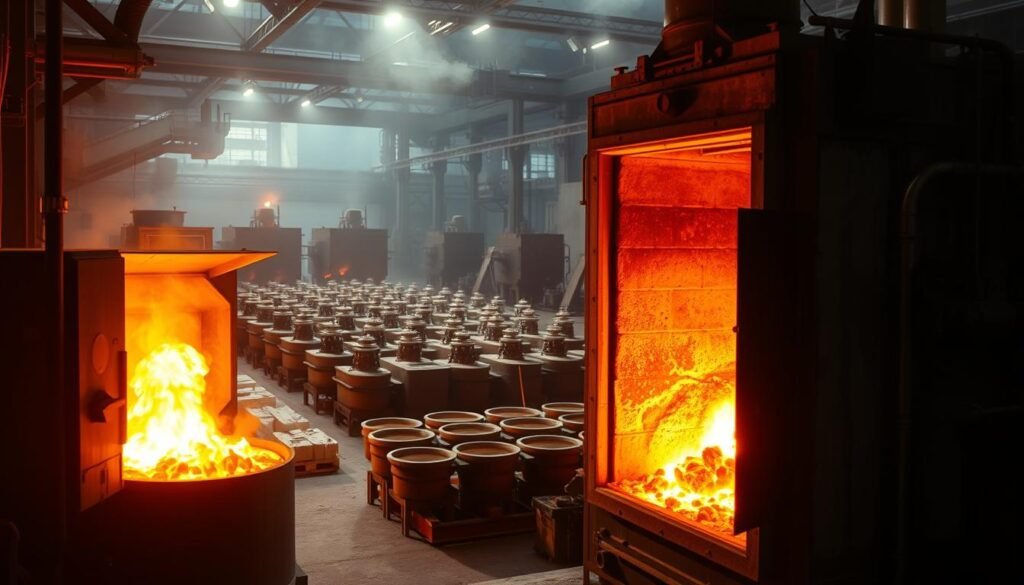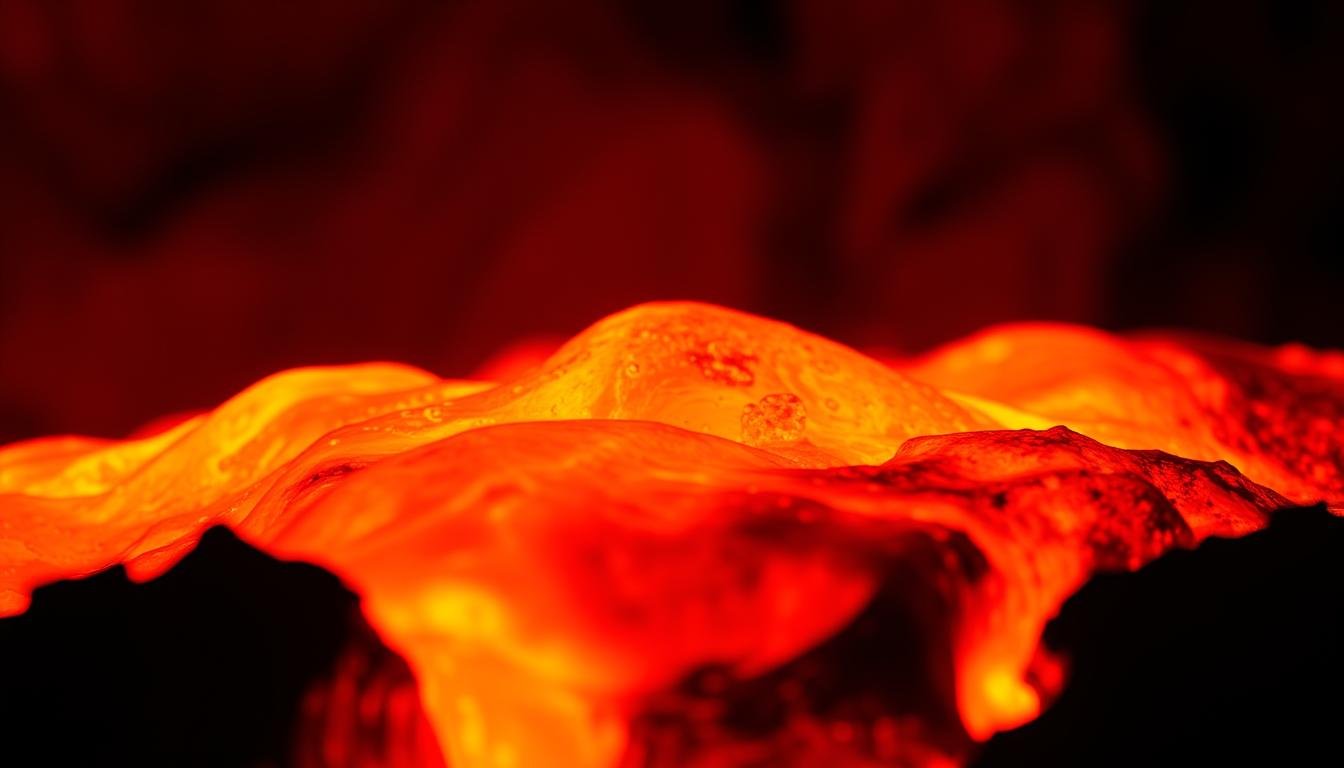Understanding the thermal behavior of metals is essential for modern manufacturing and engineering. Pure iron, a chemical element symbolized as Fe (atomic number 26), plays a vital role in industries worldwide due to its unique characteristics. Its ability to withstand extreme heat makes it indispensable in applications ranging from skyscrapers to machinery components.
At 1,538°C (2,800°F), this metal transitions from solid to liquid—a critical threshold for metallurgists and engineers. This specific temperature determines how professionals design furnaces, select alloys, and implement safety measures during metalworking processes. The element’s dominance in Earth’s core and crust further highlights its geological and industrial significance.
Material scientists rely on precise thermal data to optimize production workflows. For example, knowing when Fe changes state helps avoid structural weaknesses in finished products. The properties of this transition metal also influence its performance under stress, corrosion resistance, and electrical conductivity.
This guide explores how atomic structure and environmental factors shape iron’s behavior at high temperatures. Whether refining construction materials or developing advanced manufacturing techniques, mastering these principles ensures efficiency and safety across industries.
Introduction to Iron and Its Melting Properties
The story of civilization is deeply intertwined with humanity’s mastery of Fe. This transition metal, symbolized as element 26 on the periodic table, has driven technological revolutions from ancient weaponry to skyscraper frameworks. Its atomic structure and physical characteristics make it indispensable across industries.
Definition and Significance of Fe
As a group 8 element, Fe belongs to the first transition series. Constituting 5% of Earth’s crust, it ranks fourth in abundance among elements. Metallurgists value this metal for its balance of strength and malleability, enabling its use in everything from machinery to magnetic components.
Historical Context and Industrial Importance
The shift from bronze to Fe-based tools around 1200 BC marked a turning point in human history.
Without this metal, modern infrastructure would crumble—literally and figuratively.
During the Industrial Revolution, advancements in smelting techniques allowed mass production of steel, Fe’s carbon alloy. Today, over 90% of all refined metal is Fe-based, powering sectors from automotive manufacturing to renewable energy systems.
| Era | Innovation | Impact |
|---|---|---|
| 1200 BC | Iron Age Begins | Superior tools replaced bronze |
| 1856 | Bessemer Process | Efficient steel production |
| 21st Century | Advanced Alloys | Space exploration materials |
Fundamentals of Iron Melting Point
Phase transitions in metals dictate industrial applications and material performance. For Fe, the shift from solid to liquid occurs at a precise thermal boundary—a critical factor in manufacturing processes. This section breaks down the science behind this transformation.
Clarifying the Temperature Threshold
At 1,538°C (2,800°F), Fe reaches its thermal equilibrium state. Here, solid and liquid phases coexist until additional energy triggers full liquefaction. This threshold determines furnace designs and safety protocols in foundries.
“The strength of metallic bonds directly impacts how we engineer heat-resistant materials,” notes Dr. Elena Torres, MIT metallurgist.
Atomic and Molecular Insights
Fe’s atomic arrangement evolves with heat. At room temperature, atoms form a body-centered cubic (BCC) lattice. As temperatures rise, this shifts to a face-centered cubic (FCC) structure before liquefaction.
| Structure Type | Temperature Range | Key Characteristics |
|---|---|---|
| BCC | Below 912°C | High strength, magnetic properties |
| FCC | 912–1,538°C | Improved ductility, thermal stability |
Breaking metallic bonds demands significant energy—13.81 kJ/mol. This explains why industrial melting requires specialized equipment. Engineers use these principles to optimize casting and alloy production.
Temperature Parameters and Physical Characteristics
The thermal profile of metals dictates their industrial viability, with Fe standing out due to its exceptional range between solid and gaseous states. This 1,300°C liquid phase window—from 1,538°C to 2,862°C—provides unmatched flexibility for shaping and refining processes.
Melting and Boiling Points Comparison
Fe remains stable as a liquid across 1,324°C, far exceeding metals like aluminum or copper. This span allows manufacturers to maintain molten material for casting molds or alloy mixing without premature vaporization. Foundries capitalize on this by operating furnaces between 1,600°C and 2,500°C for optimal control.
“The 2,862°C boiling threshold gives engineers a safety buffer during high-heat operations,” explains Dr. Marcus Reed, a materials scientist at Stanford University.
Chemical and Structural Properties of Fe
With an atomic weight of 55.845 amu and [Ar] 3d⁶4s² electron configuration, elemental Fe readily donates electrons. This explains its +2/+3 oxidation states and reactivity with oxygen. At room temperature, its body-centered cubic lattice provides density (7.87 g/cm³) and magnetic behavior.
| Property | Value | Industrial Impact |
|---|---|---|
| Liquid Phase Range | 1,324°C | Extended casting durations |
| Density Shift | ~7% decrease | Mold design adjustments |
As temperatures rise, structural shifts alter conductivity and strength. These changes guide alloy development and heat treatment protocols in automotive and aerospace sectors.
Factors Influencing the Melting Temperature of Iron
Material engineers face complex challenges when working with elemental metals due to variable processing conditions. The thermal stability of Fe-based materials depends on three key elements: purity levels, alloy mixtures, and environmental controls.
Impact of Purity and Impurities
Pure Fe maintains its standard phase-change threshold at 1,538°C. However, even minor impurities dramatically alter this benchmark. Elements like sulfur and phosphorus create lattice defects, weakening atomic bonds by 12-18%.
Silicon contaminants further reduce thermal resistance. These disruptions lower energy requirements for liquefaction, enabling foundries to work at reduced temperatures. Such adjustments improve energy efficiency while maintaining structural integrity.
Alloy Composition and Variations
Adding carbon transforms Fe into versatile materials with distinct thermal profiles. Cast iron contains 2-4% carbon, lowering its processing range to 1,150-1,200°C. This makes it ideal for intricate mold pours.
Carbon steel alloys demonstrate how precise mixtures balance usability and strength. Higher carbon concentrations (0.2-2.1%) gradually reduce melting thresholds while enhancing durability—a critical factor for load-bearing components.
| Material | Carbon Content | Melting Range |
|---|---|---|
| Cast Iron | 2-4% | 1,150-1,200°C |
| Carbon Steel | 0.2-2.1% | 1,425-1,540°C |
Pressure changes also play a minor role. Elevated environments strengthen atomic interactions, slightly raising thermal thresholds. Most industrial processes ignore this effect due to minimal operational impact.
Industrial Applications and Metal Processing Techniques
Modern manufacturing thrives on precision thermal control for shaping durable metal components. Three core methods—casting, welding, and forging—form the backbone of production lines globally. Each technique demands exact temperature management to balance efficiency with structural integrity.
Casting, Welding, and Forging Processes
Casting operations require furnaces heated 150-200°C above a material’s phase-change threshold. This ensures complete liquefaction for mold filling while minimizing gas absorption. Advanced foundries use real-time sensors to maintain ±10°C accuracy during pours.
Welding specialists select electrodes and shielding gases based on thermal conductivity data. For instance, gas metal arc welding (GMAW) operates at 6,500°F to fuse components without weakening joints. Proper heat input prevents warping in automotive frame assembly.
| Process | Temperature Range | Key Benefit |
|---|---|---|
| Casting | 1,600-1,750°C | Complex shapes |
| Welding | 3,000-3,500°C | Seamless joins |
| Forging | 900-1,200°C | Enhanced strength |
Forging presses reshape metals below their liquefaction point. This preserves grain structure for load-bearing parts like crankshafts. Operators monitor infrared readings to maintain optimal malleability.
Heat Treatment and Quality Assurance
Post-processing methods like annealing and tempering refine material properties. Annealing ovens hold components at 700°C for hours to relieve internal stresses. Quality teams then verify hardness using Rockwell tests.
“Consistent thermal profiles separate premium alloys from substandard batches,” states Linda Carter, a metal processing consultant with 20 years’ experience.
Automated systems now track temperature curves during quenching. This ensures compliance with ASTM standards for aerospace and medical devices. Real-time data logging has reduced defect rates by 37% in five years.
Melting Processes, Equipment, and Safety Considerations
Advanced thermal systems power modern metal production, combining cutting-edge technology with rigorous safety standards. Selecting the right equipment ensures efficient material processing while protecting workers and equipment.

Blast Furnaces, Electric Arc, and Induction Furnaces
Three primary systems dominate industrial operations:
- Blast furnaces process raw ore at 2,000°C (3,632°F), producing liquid metal for large-scale steelmaking. They combine iron ore, coke, and limestone in continuous 10-year cycles.
- Electric arc furnaces recycle scrap metal using 40,000-amp currents. This method reduces energy use by 56% compared to traditional smelting.
- Induction furnaces employ electromagnetic fields for precise temperature control. Their closed systems minimize oxidation during alloy production.
| Furnace Type | Temperature Range | Key Application |
|---|---|---|
| Blast | 1,400–2,000°C | Primary steel production |
| Electric Arc | 1,600–1,800°C | Scrap metal recycling |
| Induction | 1,200–1,600°C | Specialty alloy creation |
Operational Safety and Temperature Management
High-heat environments demand strict protocols:
Workers wear aluminized suits and face shields to withstand radiant heat. Facilities install infrared cameras to detect equipment hotspots before failures occur.
Ventilation systems remove toxic fumes like carbon monoxide. Automated controls maintain ±5°C accuracy in liquid metal baths. Emergency shutdown procedures activate if sensors detect abnormal pressure or gas levels.
“Real-time monitoring reduces accident rates by 42% in foundries,” reports OSHA’s Metal Processing Safety Division.
Comparative Analysis: Melting Points Across Metals
Metalworkers navigate a thermal spectrum when processing materials. Each element’s unique phase-change threshold determines its industrial applications and energy requirements. This comparison reveals why Fe remains a cornerstone of modern manufacturing.
Extreme Heat Champions
Tungsten dominates with a staggering 3,422°C threshold—over twice Fe’s 1,538°C. Molybdenum follows at 2,623°C, requiring specialized furnaces. These high melting point metals excel in aerospace components but demand costly processing.
Nickel (1,455°C) and titanium (1,668°C) bridge the gap between common and exotic materials. Their thermal stability suits jet engines and medical implants. Copper’s 1,984°C threshold makes it ideal for high-voltage wiring systems.
Practical Processing Ranges
Aluminum’s 660°C threshold enables energy-efficient casting for automotive parts. Precious metals like silver (961°C) and gold (1,064°C) melt at jewelry-friendly temperatures. Lead’s low 327°C threshold aids battery production but raises toxicity concerns.
Fe’s balanced 1,538°C position allows cost-effective foundry operations. It withstands higher stress than aluminum while being more manageable than tungsten. This versatility explains its dominance in construction and machinery.
